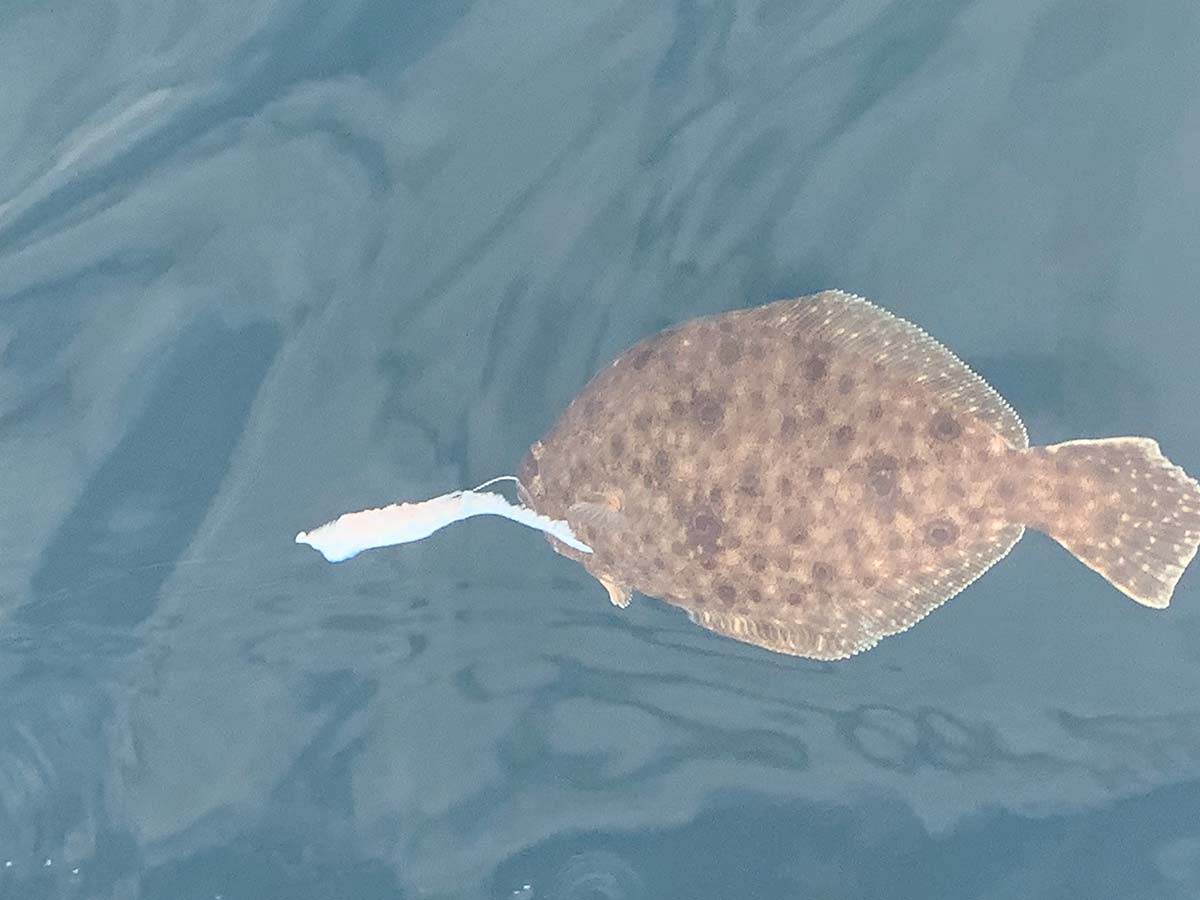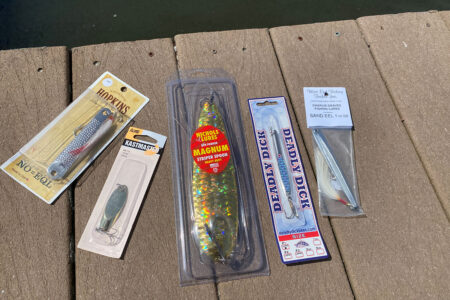
There’s nothing wrong with turning back time and using those old school baits more often
The fluke nation has more bait options than ever before. Take for example, a growing variety of synthetic baits on the market led by the always-effective Berkley Gulp Alive selections. Soft plastics have made headway with anglers that present them properly. And then there’s live bait that includes anything that can be bought, captured or cast-netted legally. Often forgotten however, is the use of meat strips. A staple of fluke anglers for decades, and something that our fathers and grandfathers relied upon as a top tier offering, has often gone ignored by many. The fact is, a length of well-presented meat is absolutely deadly for catching summer flounder.
First and foremost, fishermen must possess an understanding of the regulations. Not all fish can be cleaned or carried in pieces on board a vessel. It’s is the angler’s responsibility to research and learn the rules if there is any question to what is allowable or not as bait. That said, there are a variety of fish, some regarded as trash fish, which make for outstanding bait. Fluke belly, sea robin fillet, false albacore strips and bonito belly are just a sampling of fantastic fluke bait.
First anglers must have to decide how long a strip they want to use. Those employing a ribbon more than 6 inches should consider a stinger hook. Conventional thought is that the stinger is there solely to provide another opportunity to hook up; however, it provides stability and keeps the bait straight. Without a stinger on a long piece of bait 6 to 10 inches, there’s a chance the ribbon will flip up over the hook, or even ball up. There’s no chance of catching fish when this happens. Moreover, experienced anglers can feel the difference when this happens and should reel up right away.
For those opting to use a single hook, current plays a role in potential effectiveness of the presentation. A shorter ribbon, in the 4- to 6-inch category, works better when the drift is 1.2 mph or less. When the tide starts ripping, the bait tends to lay out differently and twirl. Shorter baits have less tendency of doing this and are extremely productive despite being sheared shorter. Furthermore, strips should be hooked close to the top of the ribbon with the hook protruding through a quarter-inch below the lead edge. This allows the bait to pass through the water more efficiently. The hook point, when plunged through the bait, often picks up a single scale from the skin that rests right on the point itself. This must be removed. When fishing meat on a tandem or single hook rig, the angler’s jigging is more of a gentle lift and drop in order to keep the bait from fouling.
Strips can be cut into different shapes and sizes. Pennant shapes are regarded as the standard, but other appearances will also work. I have seen some crazy shapes that have all caught! There’s nothing wrong with a little Edward Scissor Hands treatment with the knife or shears. The width, however, should range from half an inch to 1-1/2 inches on average.
Jigs and bucktails are popular and good ways to fish meat. They assist in swimming the bait effectively. Snap-jigging anglers just have to be aware that the bottom half of the bait will occasionally ball up over the hook.
Fishermen using meat ribbons should run them through the water boatside before sending them to the bottom. The goal is to see if the bait lays out properly without spiraling. Baits that twist and turn don’t get struck and should be refastened appropriately.
Anglers should keep their baits on ice and as fresh as possible. It’s also beneficial to keep the bait in a plastic bag that lays on the ice because freshwater causes faster deterioration of the meat. When strips are left in the sun, the meat slowly spoils and falls off the skin too easily. When a head-shaking fluke comes into the vessel, it throws soft pieces of meat all over. If not washed off surfaces, the bait hardens and becomes a bigger hassle to clean. Therefore, a fluke should be immobilized as soon as possible when it is landed.
Even when perfectly cared for, differences in each type of bait exist. Fluke and sea robin ribbons are hardy baits. Additionally, sometimes one ribbon can catch up to four summer flounder before it loses its worth if the fluke doesn’t thrash and trash the bait. Fillets from bluefish and false albacore conversely, get mushy fast and don’t have much staying power. I mentioned fresh is best, but fluke and sea robin belly can be frozen and still be productive compared to other options. There’s nothing wrong with turning back time and using those old school baits more often.




